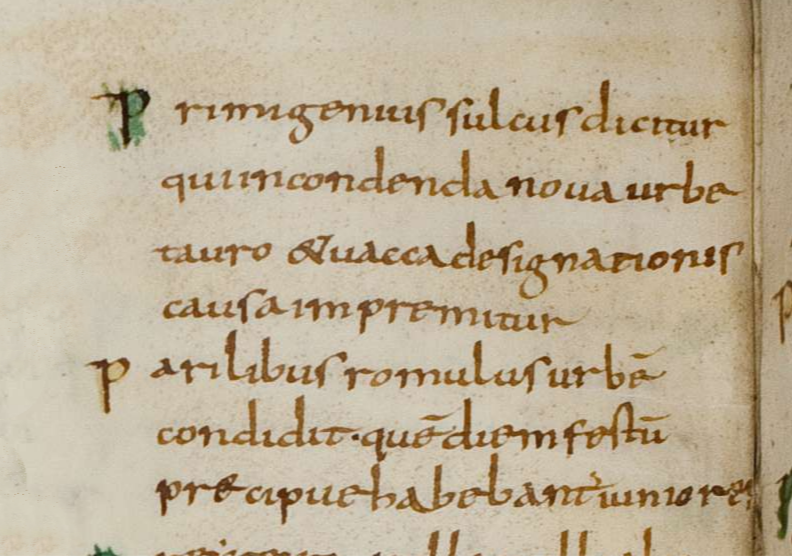Tropaion : Turning Point to Victory
- sulla80

- Sep 7, 2020
- 3 min read
Updated: Oct 8, 2023
This "Greek" coin from Pergamon is the coin of interest for this week.

Mysia, Pergamon, 159-133 BC, Æ (16.6mm,5.36g, 12h)
Obv: Helmeted head of Athena right
Rev: ΑΘΗΝΑΣ ΝΙΚΗΦΟΡΟΥ, military trophy facing, monogram left of trophy and right of legend
and a second one that is larger and with monogram right of trophy:

Mysia, Pergamon, 159-133 BC, Æ (18.9mm,6.45g, 12h)
Obv: Helmeted head of Athena right
Rev: ΑΘΗΝΑΣ ΝΙΚΗΦΟΡΟΥ, military trophy facing, monogram right of trophy and right of legend
What is a tropaion?
The reverse of this coin as what drew my attention to this coin, a large "tropaion" or trophy which can be found over many years on ancient coins like this Roman Republican denarius from L. Aemilius Lepidus Paullus, 62 BC:

and this Roman Imperial denarius from Trajan struck around AD 107-108:

and this Roman Imperial denarius from Septimius Severus struck around AD 194:

A tropaion is an archaic Greek style, battle trophy (from tropê which translates to “turning point”). It is a branched tree decorated with the shields, armor and weapons of the defeated enemy that would be set up at the location where the battle had taken a turn toward victory.
Where is Pergamon?
The coin was minted at Pergamon, Mysia, on the western edge of modern Türkiye, as seen in this map van der Heyden (1960), Atlas of the Classical World.

What is the mintmark?
The first puzzle for me of this coin is the mintmark. Reverse variants can be found in several references with one matching reference found. Reviewing ACSearch I find 3 different mintmarks in two different positions (left and right) of which the #1 (two variants) looks closest to my first coin (on left) and #3 close to my second coin (on right).

Out of 148 coins reviewed on ACSearch:
All of which leaves unanswered - what do these represent? 2a a match to this mintmark of Pergamon from an AR Cistophoric tetradrachm:

and the others, do they reference other cities?
Wroth (1892), Catalogue of the Greek Coins of Mysia p.130 ( also here) references 179, with the monogram 1a from my list along with a couple of others.

Hill, editor (1906), Corolla Numismatica Plate II, #35 (a mintmark that I didn't see on ACSearch)

Hansen (1971), The Attalids of Pergamon (references #2a)

Johnston (1981), Monograph 7, Greek, Roman and Islamic Coins of Sardis
(another mintmark that I didn't see - close to #1a)

None of these references bring to conclusion the question of what the mintmarks represent.
When was this coin minted?
The second puzzle is the date: Wroth placed these coins under Roman Rule between 133 BC and the reign of Augustus. Later references align with von Fritze's argument in 1906 "Chronology of the autonomous coins of Pergamon" that style and other evidence place these coins in the period before Roman rule (133 BC) and after 200 - the later period of the Pergamene kingdom.

Kings of Pergamon, Attalus I (241-197 BC), AR Tetradrachm (16.4g, 28mm), Pergamon, in the name of Philetairos
Obv: Laureate head of Philetairos right.
Rev: ΦIΛETAIPOY, Athena seated left on throne, cradling spear, resting elbow upon shield and crowning dynastic name with wreath; bow to right. Controls: Cornucopia to outer left, monogram to inner right.
Ref: SNG BN 1622.
Eumenes II, eldest son son of Attalus I, ruled the Pergemene Empire 197–159 BC and with help from the Romans was victorious over the Gauls and King Prousias of Bythinia in 183 BC, earning him the name "Nikephoros" (Bringer of victory). And with that we are back to tropê and a turning point to victory for Eumenes II. In 181 BC, he established the festival of Athena Nikephoros at Pergamon. The obverse of this coins features a portrait of Athena Nikephoros and the reverse legend spells out ΑΘΗΝΑΣ ΝΙΚΗΦΟΡΟΥ. These coins may have been issued as coins for subsequent festivals under the reigns of Eumenes II's brother and successor in 159 BC, Attalus II, and his nephew and successor, Attalus III. Attalus III willed his empire and Pergamon to Rome after his death in 133 BC. There is much more to this story, but already this post has gotten far too long...



Comments